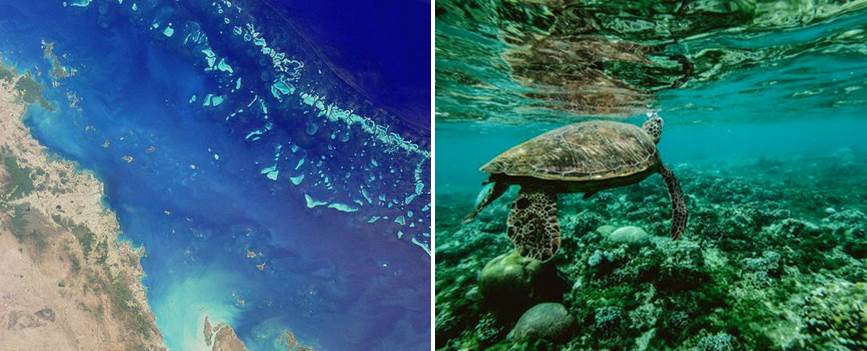

Photo: The Great Barrier Reef, Northern Queensland, Australia
Rivers deliver sediment from land to the ocean. This sediment contains nutrients which can feed microscopic algae in water. But, if there is too much sediment and nutrients, delivered by floods from land-based erosion, algal blooms can occur that have negative effects on the Great Barrier Reef.
The challenge is that sediment comes from many different locations and we need to know which types of sediment deliver the most nutrients and have the biggest impact. Once we know this, management plans can be developed to target the key hotspots of sediment in the catchment and reduce its effect on the Great Barrier Reef.
Researchers at the Australian Rivers Institute, in collaboration with the Department of Environment and Science at the Queensland Government, have developed a new technique to rapidly identify the most polluting sediments. When used in conjunction with knowledge of sediment erosion in the landscape, this technique will allow managers to focus on restoring areas where erosion would have the largest impact downstream.
“We are using naturally occurring microscopic algae, called phytoplankton, to identify sediment sources which may cause nutrient problems in coastal waters. Algae are an important part of these ecosystems, but nutrients in sediment can make them grow rapidly and bloom. We are able to measure how fast algae grow when exposed to sediments and their associated nutrients collected from different sources, work out what role sediment nutrients play, and predict the effect each source may have on blooms” says Dr Hannah Franklin, from the Australian Rivers Institute. […]
Full article: To fix the reef we first need to fix the land – but where do we start?
Clean water is essential for life, yet millions of Americans unknowingly consume contaminants through their…
Human brains contain higher concentrations of microplastics than other organs, according to a new study, and the…
From the Office of the Governor: In anticipation of a multi-day, significant atmospheric river in Northern California,…
From Governor Newsom: Scientists, water managers, state leaders, and experts throughout the state are calling…
Photo: A harmful algal bloom in Milford Lake, Kansas, made the water appear bright green.…
An expanded plastic foam coffee cup is at a donut shop in Monterey Park, California.…